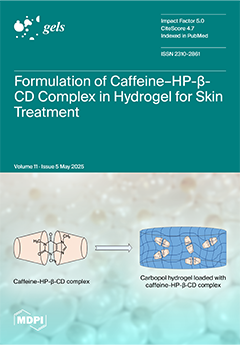The aim of this study was to investigate the hypoglycemic activity and mechanism of
G. lemaneiformis polysaccharide gels (GLP and GLP-HV) based on IR/IRS-2/PI3k/Akt/Glut4 and glycometabolism signaling pathways in HepG2 cells. After H
2O
2-Vc degradation, the molecular weight of
G.
[...] Read more.
The aim of this study was to investigate the hypoglycemic activity and mechanism of
G. lemaneiformis polysaccharide gels (GLP and GLP-HV) based on IR/IRS-2/PI3k/Akt/Glut4 and glycometabolism signaling pathways in HepG2 cells. After H
2O
2-Vc degradation, the molecular weight of
G. lemaneiformis polysaccharide gel declined from 1478 kDa to 16 kDa. Molecular weight chromatogram and distribution indicated that GLP-HV had a high molecular weight homogeneity compared to GLP.
G. lemaneiformis polysaccharide gels significantly decreased the TC, TG, LDL-C, MDA, and LDH contents and enhanced the activities of HDL-C, T-AOC, CAT, GSH-PX, SOD, insulin, and glycogen in HepG2 cells. Fluorescent staining results showed that
G. lemaneiformis polysaccharide gels reduced ROS and calcium ions levels in HepG2 cells. GLP and GLP-HV displayed excellent hypoglycemic activity, with GLP-HV performing better. Furthermore, qPCR and Western blot analysis revealed that
G. lemaneiformis polysaccharide gels remarkably strengthened the levels of IR, IRS-2, PI3K, Akt, Glut4, HK, G6PD, PFK, PEPCK, GK, PK genes, and proteins. Spearman’s correlation analysis revealed that the IR/IRS-2/PI3k/Akt/Glut4 signaling pathway played a dominant role in regulating activity. These results show that
G. lemaneiformis polysaccharide gels present a prominent hypoglycemic effect mediated by the IR/IRS-2/PI3k/Akt/Glut4 and glycometabolism signaling pathways, with the former playing a dominant role.
Full article






